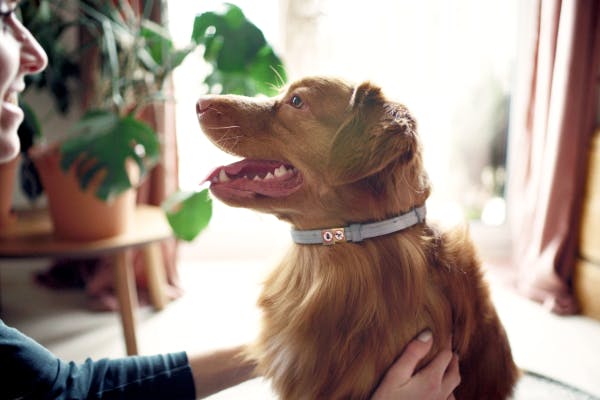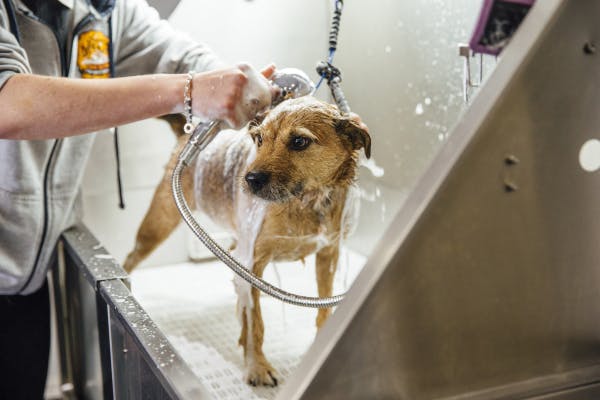learn about retractable dog leashes
Looking at the Good and Bad of Retractable Dog Leashes
Retractable dog leashes allow more space for your dog to explore, better exercise options, simpler handling for you, and enhanced training possibilities. Yet, they also come with drawbacks like possible hazardous situations, challenges in regaining control, chances of breaking, and injury risks.

Retractable dog leashes give dogs extra space to discover their surroundings while still being controlled and can improve exercise options. Also, retractable leashes tend to be simpler to handle and manage compared to traditional fixed-length leashes. Nonetheless, it's vital for owners to weigh these benefits with responsible use and safety concerns.
Benefits of Retractable Dog Leashes
Retractable dog leashes are becoming more popular among dog owners. They offer many benefits that can make walking your dog more enjoyable. Here are a few reasons why people choose to use retractable leashes:
More Freedom for Exploration
One main advantage of using a retractable leash is that it allows your dog more room to explore while still being under your control. Unlike traditional fixed-length leashes, retractable ones can extend up to 15 or 20 feet, or even longer. This gives your dog extra space to wander around and satisfy their curiosity without you having to follow closely behind.
Enhanced Exercise Opportunities
With the freedom to explore comes the chance for more exercise. The extended length of retractable leashes lets dogs roam further and burn more calories during walks. This not only helps keep your pet in good physical shape but also helps them burn off extra energy that they might use in less desirable ways at home.
Easier Use for Owners
Many dog owners prefer retractable leashes because they are easier to use and manage. With traditional fixed-length leashes, you often have to adjust the leash from hand to hand or fold it over to prevent giving your dog too much space. Retractable leashes solve this problem by providing automatic tension on the line, making sure that your dog only gets as much room as you want them to have.
Improved Training Opportunities
While not all training situations are suitable for retractable leashes, they can offer some advantages when teaching advanced commands like "heel" or "come". These commands need allowing your dog some distance from you before calling them back, which is easier with a longer leash length provided by retractable models.
In short, a retractable leash can be an excellent choice for many dog owners. It offers flexibility, freedom, and convenience that other types of leashes may not provide. However, it is important for owners to remember that these benefits should always be balanced with responsible use and safety considerations.
Why Are Retractable Leashes Bad
Retractable dog leashes can seem like a convenient option for many dog owners, offering their pets more freedom to explore during walks. However, despite their popularity, these leashes have numerous disadvantages that can pose risks to both the dog and the owner.
Control difficulty: Retractable leashes spin at high rates like fishing reels, making them hard to control, especially in stressful situations.
Injury potential: The material and thin design of retractable leashes can cut into your hands if pulled suddenly.
Bad habit reinforcement: Retractable leashes may teach dogs to keep their distance from owners during walks, encouraging them to pull more.
Inconsistent space: Retractable leashes do not offer consistent space, leading to tension from your end and causing your dog to become desensitized to tension on the leash.
Neck or shoulder injuries: Dogs can get a running start when seeing another dog or person, resulting in stress on their neck when they reach the end of the leash.
Tangled cord injuries: Dogs who sprint may run out of lead and get spine injuries or strangulation if they get tangled in the thin cable.
While retractable leashes might seem like an attractive option due to their convenience factor and perceived freedom they offer dogs, they come with several disadvantages that pose risks for both pets and owners. It's essential for pet owners to consider these factors before deciding on using such devices.
best retractable dog leashes
- our rating97 out of 100
- our rating95 out of 100
- our rating89 out of 100
Using Retractable Dog Leashes for Training
A retractable leash can be helpful when training a dog, but it is important to use it correctly. The design of a retractable leash allows it to extend and retract as the dog moves, giving the dog more freedom to explore during walks. However, this freedom can also create challenges during training sessions.
Understanding the Retractable Leash
A retractable leash has a handle that holds a spool of tape or cord. When the dog pulls on the leash, more tape comes out from the handle, making the leash longer. The person holding the leash can control how much tape comes out by using a lock or brake button on the handle. But remember that the leash will only go back in if there is no tension in it. If a dog is pulling on the leash, it will not automatically go back in.
Training with a Retractable Leash
When training a dog with a retractable leash, it is important to know that dogs learn through consistency and repetition. One common problem many dog owners have is their dogs pulling on their leashes during walks. With a regular fixed-length leash, if a dog pulls and feels resistance (the person stopping or changing direction), they eventually learn that pulling does not help them get where they want to go faster.
But with a retractable leash, when dogs pull and feel resistance (the leash getting longer), they often think this means they have more freedom to explore. This can accidentally teach them that pulling gets rewarded with more space to roam.
To avoid this problem while using a retractable leash for training:
Teach your dog good walking skills first: Before using a retractable leash with your dog, make sure they know how to walk nicely using standard six-foot leashes.
Limit slack: Only let your dog take out as much of the retractable leash as needed for their current activity or environment.
Use verbal cues: If your dog starts pulling on their retractable leash, use verbal commands like "come," "heel," or "stay" to bring them back to you before taking in any slack on their leash.
Avoid sudden stops: Never let your dog run at full speed and then reach the end of their extended leash, as it could cause injury.
Reinforce positive behavior: Reward your pet when they walk well without pulling on their leash even when it is extended.
Choosing a Suitable Retractable Leash
When picking a suitable retractable leash for training:
Comfort is important: The handle should feel comfortable in your hand and be made from non-slip material.
Choose the right length: A shorter length keeps you close enough for safety while still giving your pet freedom.
Pick tape over cord: Tape leashes are easier to see and less likely to break if pulled hard.
Keep in mind that while training with this type of leash can be helpful in some situations, it should not replace traditional obedience training methods or be used all the time because of possible safety concerns related to its use.
Understanding Retractable Leashes and Traditional Fixed-Length Leashes
When it comes to keeping your dog safe and under control during walks, the type of leash used plays a significant role. The two main types of leashes are retractable leashes and traditional fixed-length leashes. Each has its features that may cater to different situations and preferences.
Retractable Leashes
Retractable leashes are designed with a mechanism that allows the length of the leash to be adjusted. This type of leash has a handle with a thin cord or belt wound inside, which can be extended or retracted based on the handler's discretion.
While using a retractable leash, owners can adjust the length to give their dogs varying degrees of freedom during their walks. This feature allows dogs to explore their surroundings while still being under control.
However, using retractable leashes requires responsible usage. It is important to consider factors such as your dog's behavior, training level, and the environment you will be walking in when deciding if a retractable leash is appropriate.
Traditional Fixed-Length Leashes
On the other hand, traditional fixed-length leashes offer stability and control in a simple design. These leashes have a strap or cord attached to a handle at a constant length, providing a reliable connection between you and your dog.
Fixed-length leashes offer consistent control during walks due to their unchanging length. This makes them ideal for situations where tight control over your pet is necessary.
Although they do not offer as much flexibility as retractable leashes, traditional fixed-length leashes are known for their reliability and simplicity. They provide stability and peace of mind during walks with your dog.
Making A Choice
When comparing retractable leashes with regular ones, it's essential to consider several factors:
Your Dog's Behavior: Some dogs might behave better on one type of leash over another.
The Walking Environment: Certain environments might be more suited for one type of leash.
Your Personal Preference: Some people might find one type of leash more comfortable or convenient than another.
Both retractable leashes and traditional fixed-length ones have distinct advantages depending on various circumstances. The choice ultimately depends on factors like your dog's behavior, training needs, walking environment, and personal preference.






